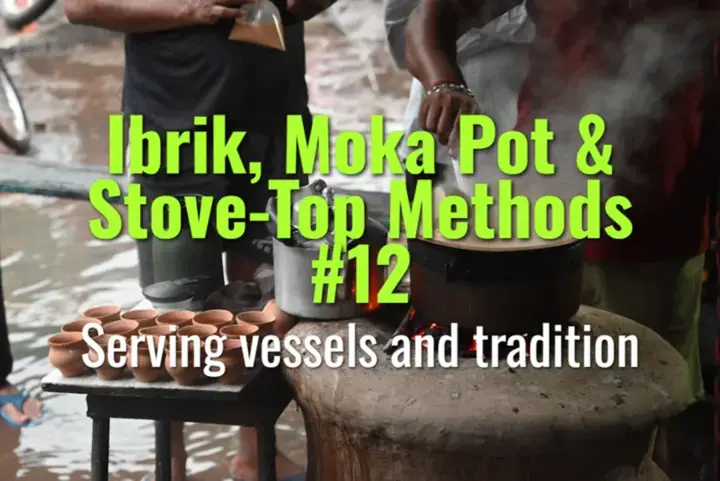Serving vessels and tradition
The cultural significance of serving vessels for ibrik and Moka pot coffee, and how tradition influences presentation and hospitality.
- Coffee Basics Nerds
- 2 min read
Article 12 of 12 in Ibrik, Moka Pot & Stove-Top Methods/

Ibrik Service Traditions
- Coffee brewed in an ibrik (cezve/briki) is poured into small porcelain or ceramic cups known as fincan (Turkey) or demitasse (international).
- Cups are small (50–70 ml) to match the strong, concentrated brew.
- Served with foam (köpük/kaimaki) intact, showing brewing skill.
- Often accompanied by a glass of water and sometimes sweets like Turkish delight or halva.
- Drinking etiquette: sip slowly, stop before reaching the grounds at the bottom.
Middle Eastern & Balkan Variations
- Arabic Coffee (Qahwa): Served in small handleless cups (finjan), often from a larger dallah pot.
- Bosnian Coffee: Poured into small copper cups, often on a tray with sugar cubes, lokum, and sometimes rakija.
- Service emphasizes hospitality, patience, and respect.
Moka Pot Service Traditions
- In Italy, coffee brewed in a Moka pot is poured directly into small ceramic cups (tazzine).
- Usually consumed at home, often black or with sugar.
- For breakfast, Italians may pour into larger cups (cappuccino cups) and add milk.
- Sharing the pot is part of family ritual, often enjoyed around the kitchen table.
Modern Adaptations
- Specialty cafés may serve Moka pot or ibrik coffee in glassware to highlight clarity and color.
- Some upscale venues use custom ceramics that blend tradition with modern design.
Summary
Serving vessels are central to the cultural identity of stove-top coffees. Whether it’s the ornate copper sets of ibrik service or the simple ceramic cups of Italian Moka pots, the vessel reflects heritage, hospitality, and the social context of drinking coffee.